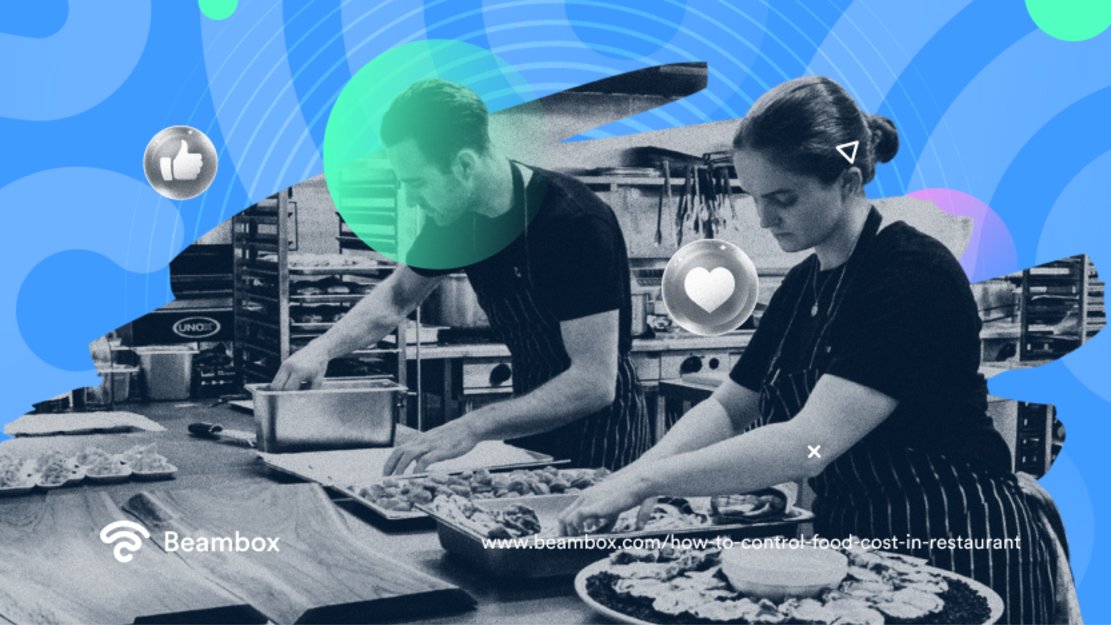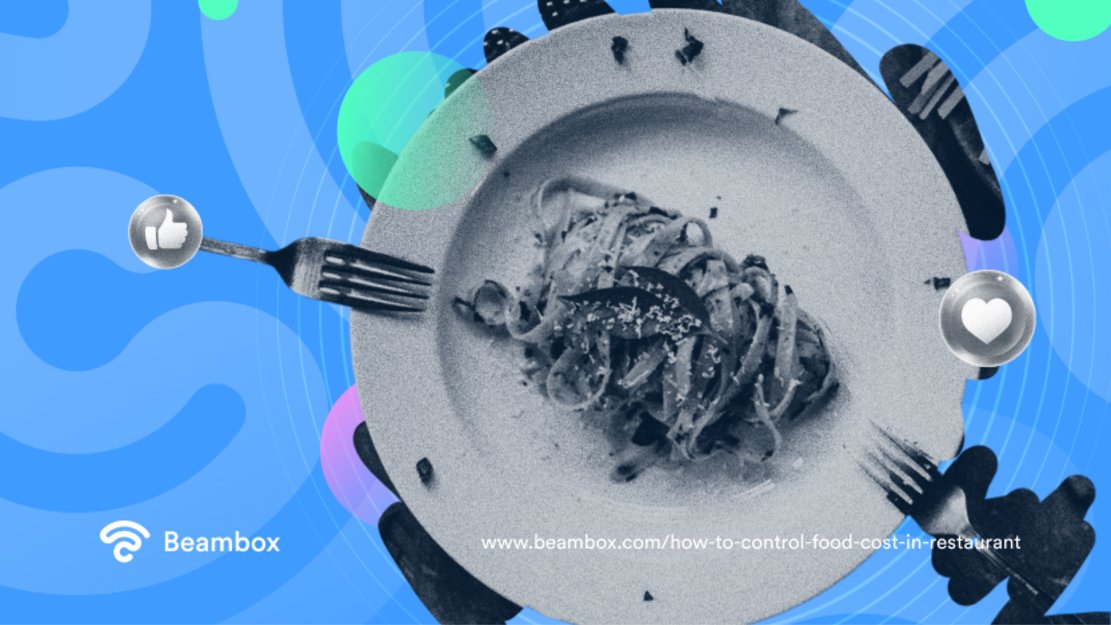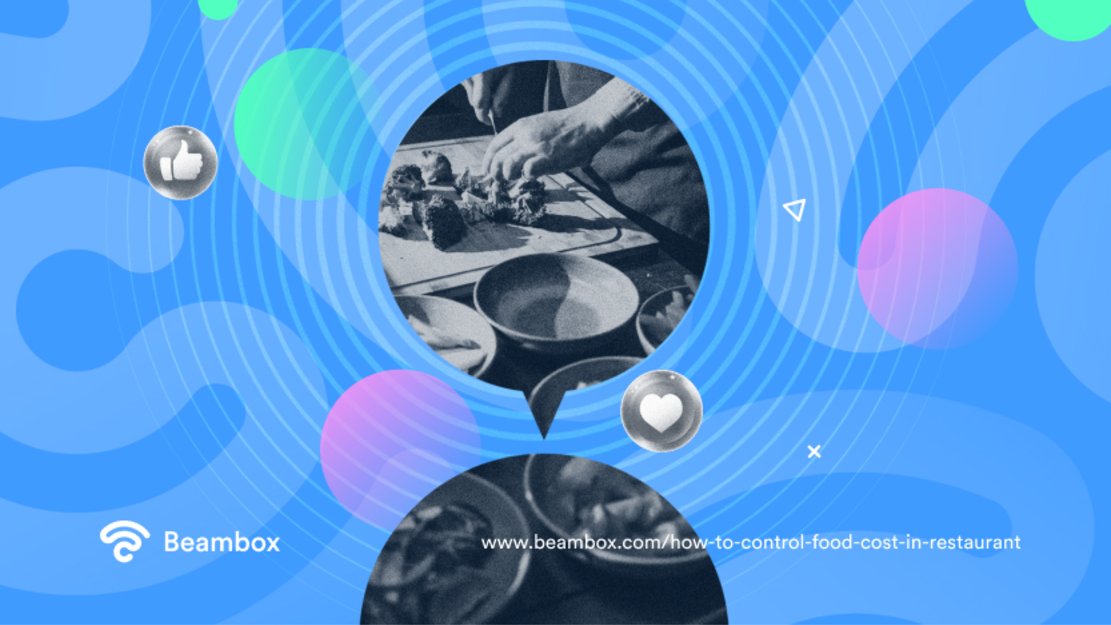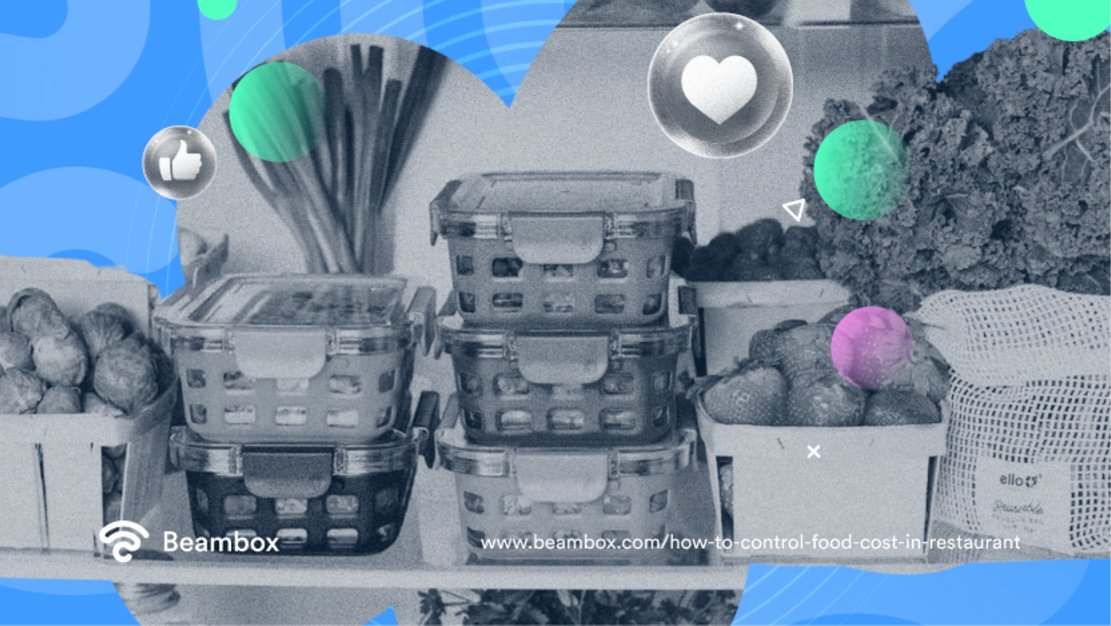Restaurant success is about more than just serving delicious food. You must ensure your restaurant makes enough money to generate decent profits. If you’re not mindful of your food costs, your restaurant’s financial success could be at risk. But how to control food cost in restaurant without going crazy?
Your search ends here if that’s the question you’re hunting. Whether you own a restaurant or are interested in learning about running one, this article is for you.
Learn how to control food cost in restaurant with six easy yet innovative techniques. Moreover, discover how to calculate food cost percentages for ideal results.

What Is Food Cost Control, and Why You Should Care About It?
Let’s start by answering the question, “What is food cost control?”. It means managing and keeping track of the money spent on food in a restaurant. If you want to spend less on food without compromising quality and standards, food cost control is the answer.
This is important because it helps restaurants make profits and succeed financially. But that’s not the only benefit it offers.
Food is one of the most significant expenses for restaurant businesses. By controlling food costs, you can spend wisely without compromising quality. It is definitely one of the most important restaurant benchmarks to observe. The section about how to control food cost in restaurants will reveal some options to do this.
Moreover, if you know how much the food costs, you set better prices when developing your menu. Another name for this is restaurant menu engineering.
However, controlling food costs doesn’t mean you must reduce the quality. It’s more about switching up your ways of preparing food, for example, looking for alternate, fresher options.
It gets even better when these options make customers happy and encourages them to return. Do you know what this means for you? A good restaurant reputation. This is better than all forms of advertising!
Lastly, when you know how much your food costs, you can plan for the future and make more accurate budgets.
From Plate to Profit: How Do Restaurants Calculate Food Cost?
If you want to embrace food cost control, you must know how restaurants calculate food costs. This metric will help you calculate your restaurant’s margin.
Well, it’s not just about knowing what goes into the food. You also need to consider other factors to control food costs in restaurants. Let’s go deeper into the details of this calculation.
- Break the dish apart: The first step is to see what and how much goes into each dish. Remember, you cannot miss any ingredient here because every bit counts.
- Calculate plate cost: Now that you have broken down the dish, look at how much each ingredient costs. Then add those up to know the total cost of the plate.
- Add the other costs: Now add additional expenses like salaries, electricity and other relevant ones.
- Calculate food cost percentage: Divide the food cost by the price on the menu.
- Determine target food cost: Suppose the dish’s price is $15 and your food cost percentage is $9. Then your dishes should cost you less than $6 to make.

How To Control Food Cost in Buffet Restaurant and Maximize Profitability?
With buffet restaurants, you need to be extra careful. Customers can sometimes become too excited at buffets, and that can cause food and money wastage. So there’s no room for mistakes. But don’t worry. Here’s how to control food cost in buffet restaurant.
Start by choosing dishes that use inexpensive ingredients. But this isn’t an excuse to lower the quality. It means using fruits and vegetables that are in season and come from nearby farms. Farm-to-table options really suits buffet strategy.
Build strong relationships with suppliers so that when the time comes, you can get better prices for the ingredients.
Finding ways to save energy in the restaurant, especially the kitchen, can also lower food costs. Use equipment that uses less energy and simplify the steps for preparing food.
However, without avoiding food wastage, all efforts on how to control food cost in restaurant will go down the drain. People can get access to food in two ways:
- Waiters serve them what they want
- They fill their plates themselves
For the first option, you can train servers to fill the right amount of food on each plate. If the customers insist on more, the servers can request them first to finish what they have to avoid waste.
But for the second option, incentives work best. You can announce that all customers who finish their plates and don’t waste food will receive an incentive.
How To Control Food Cost in Restaurant: 6 Techniques To Prevent Overspending
The ideal food cost percentage is between 28% and 35% of food sales. For example, you generate $100 in food sales. So, you should have a food cost of $30 to get a food cost percentage of 30%.
However, 85% of food is thrown away in American restaurants. So this threshold is hard to achieve. But don’t worry. Here are six techniques on how to control food cost in restaurant.
How To Control Food Cost in Restaurant Technique #1: Pay Attention To Raw Materials
The first thing that goes into a recipe is raw material. So, starting this list of how to control food cost in restaurant with raw materials makes sense. Knowing exactly what and how much goes into each recipe can bring you back into the game of cost control.
Start by comparing prices and quality when purchasing ingredients. Sometimes, buying in bulk is more economical. Also, keep an eye out for sales or seasonal specials and don’t forget about storage. Proper storage helps ingredients last longer.
But don’t stop there. Practice the “first in, first out” approach. This means using older raw materials first to prevent them from expiring or going to waste. And lastly, get creative with the leftovers. Keeping an eye on these elements will guide you to pricing the items on your menu.

How To Control Food Cost in Restaurant Technique #2: Portion Control Isn’t Just for Losing Weight
It is no secret that portion control is the best way to lose weight. But that isn’t the only thing it’s good for. Portion control is an answer to how to control food cost in restaurant. Here’s how.
Your goal is to serve the same portion size for each dish on the menu. This means every customer gets an equal share. Not only that, it keeps things under control.
Moreover, portion control can help you lower plate costs. It’s tempting to put a large amount of food on plates to make customers happy. But it can lead to waste and more expenses. So, it’s better to serve reasonable portions that satisfy customers without going overboard.
Furthermore, smaller plates and bowls make it look like there’s more food, even with smaller portions. This helps manage costs by using less food per serving. And it still looks good to customers! What else could one want?
However, people have different appetites and dietary preferences. So, offering adjustable portion options can also help. For example, a customer on a diet can ask for half of a specific dish. Or someone looking to gain muscle can ask for a bigger portion.

How To Control Food Cost in Restaurant Technique #3: Prep Your Ingredients and Embrace Freshness
Another way to control food cost in restaurant is by prepping the ingredients instead of buying packaged ones. This is helpful because packed ingredients are usually more expensive than whole foods. And they also encourage freshness. So, here are some steps that will help you save money and make your food taste better.
First, try buying whole vegetables instead of already cut or packaged vegetables. When you have whole vegetables, you can decide how much you need.
Another way to save money is by using leftover ingredients. With packed food, you don’t get to use all vegetable parts, like the stems and leaves. You can use them in broths, sautés, soups, stews, or as salad greens.
Or if you have extra bread, you can make croutons or breadcrumbs yourself. This way, you throw away less and get the most out of every ingredient.
Moreover, you can try composting organic scraps. Composting means turning food waste into soil that has lots of nutrients. Use this soil for a garden in your kitchen or give it to local farms. Who knows? You may get free ingredients in return for scraps.

How To Control Food Cost in Restaurant Technique #4: Never Lose Sight of Your Inventory
Inventory management is next on this list of how to control food cost in restaurants. This involves knowing exactly what ingredients and supplies you have and their remaining quantities. Imagine how informed and empowered you’ll be by generating weekly food inventory reports!
When you keep track of your inventory, you can avoid ordering too much or too little of certain items. But why does that matter? Ordering too much will lead to food wastage because ingredients might spoil before usage.
Alternatively, if you order less, you might run out of ingredients during busy times. Do you know what you’ll have to face if this happens? Unhappy customers!
Moreover, when you know your inventory well, you can identify ingredients occurring less frequently in dishes. Knowing this, you can stop buying those ingredients or find ways to use them.
But you can’t calculate daily inventory cost manually as it would require too much time and effort. Instead, use tools like restaurant POS systems or dedicated inventory management software.
How To Control Food Cost in Restaurant Technique #5: Keep Tabs on Your Sales History
Sales forecasting is a relatively simple concept that most restaurant owners often neglect. Don’t make the same mistake because while sales forecasting isn’t perfect, it can do wonders for controlling food costs.
It involves looking at past sales to understand what customers like, when they like it, and how much they buy. It also gives you useful information on your customer profile. Here’s how to control food cost in restaurant by sales forecasting.
Firstly, keep track of your sales history. This means recording how much you sell daily, weekly, monthly, and yearly. It’s also helpful to collect information about specific items or types of food. POS systems for restaurant will automate the task for you. Consider using one of them.
Once you have enough sales history, study the information to find patterns and trends. For example, you can see which dishes are popular and which items sell more during certain times of the year.
Using this information, you can only buy ingredients for the popular dishes and change the underperforming ones.
Moreover, based on past sales, it helps you predict how much food you will need. For instance, you notice that you always sell a lot on weekends or holidays. Knowing this, you’ll buy enough ingredients during these times and avoid getting extra during weekdays.
How To Control Food Cost in Restaurant Technique #6: Plan for Employee Meals
Apart from customers, you must also take care of your staff’s food. You might wonder why. Well, long hours of serving your customers can be tiring and stressful for your employees. Providing a meal makes them feel appreciated and builds a strong team.
So, let’s end this list of how to control food cost in restaurant by planning employee meals.
The best option is to offer a fixed dish for free. Choose a tasty, filling, and healthy dish. Avoid choosing expensive or fancy dishes for regular meals. However, you can include them as a treat on special occasions.
Moreover, you need to care for everyone’s preferences. So, discover what the majority likes and make sure it falls into your budget.
Overall, learning how to control food cost in restaurant isn’t that hard. You need to think out of the box and track all your expenses. Come up with creative ways to use leftovers. Plan for employee meals in advance and set ground rules to reduce wastage.
Moreover, keep track of your inventory and buy only what you need. But your work doesn’t end with merely purchasing inventory. You need to store it properly so it doesn’t spoil.
You don’t need extreme measures like cutting employee meals and trimming the menu to the cheapest. Following the tips in this article will help you reduce food costs in restaurant management.
However, never compromise on quality. Customer experience is more important than saving a few hundred bucks. If you want to learn more about your customers and improve your customer experience, try out Beambox.
Beambox is a WiFi marketing solution that allows you to gather data from your customer to learn about their preferences. Moreover, you’ll be able to automate the most important marketing activities for your restaurant.
Start your thirty days free trial now!
Get Started With Free WiFi Marketing
Beambox helps businesses like yours grow with data capture, marketing automation and reputation management.
Sign up for 30 days free